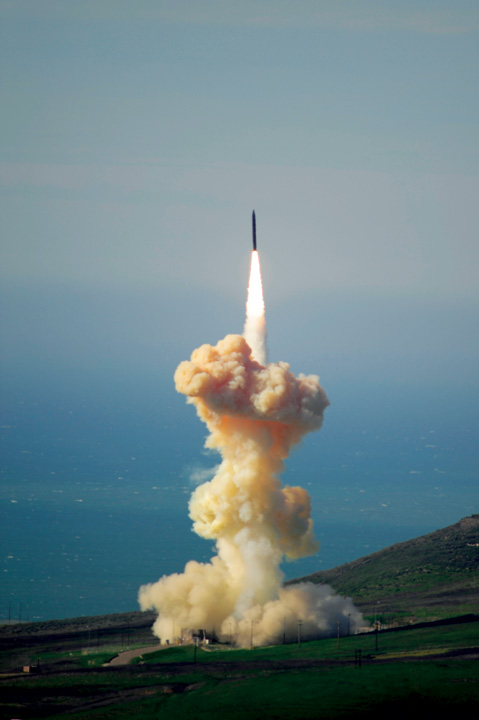Vandenberg Shoots Wide
Concerned Scientists Report Missile-Defense System Unreliable
A 2002 push by President George W. Bush to fast-track countermeasures against attacks from rogue states — namely Iran and North Korea — has produced an unreliable missile-defense system at Vandenberg Air Force Base, according to a recent report by the Union of Concerned Scientists.

Vandenberg is home to four underground silos designed to launch interceptor missiles against incoming enemy warheads, “like hitting a bullet with a bullet,” said Laura Grego, a Caltech-trained physicist and one of the report’s three authors. Of the seven tests conducted from Vandenberg since 2006, three interceptors failed to hit their mark and another resulted in a “glancing blow,” which the report tallied as a failure. Of the 17 tests conducted — other launch sites include Alaska’s Kodiak Island and the Marshall Islands’ Kwajalein Atoll — about half have failed. “The test record is really quite poor,” Grego said. “They’re not very effective. Nevertheless, they keep building them.” A big part of the problem, added Grego, is that Bush’s directive to expedite operations exempted the program from the oversight and accountability typically required of major military systems. “Nearly 15 years of this approach has led to an expensive and poorly performing system,” said Grego. The report estimates its overall price tag at $40 billion, based on information from the Government Accountability Office.
Established by the National Missile Defense Act of 1999, the Missile Defense Agency’s mandate was to get the program up and running “as soon as was technologically possible,” said Chris Johnson, the agency’s director of public affairs. “This rapid deployment requirement was a driving factor in delivering a ground-based interceptor capability with reliability challenges.” Those challenges have since influenced improvements in design and development, he added. “We continue to lower our program risks.”
While no new silos are planned for Vandenberg, Alaska’s Fort Greely will have an additional 14 online by the end of 2017, bumping its total number to 44, Johnson said. The four silos at Vandenberg will cost $11.5 million this fiscal year to maintain, he added.



